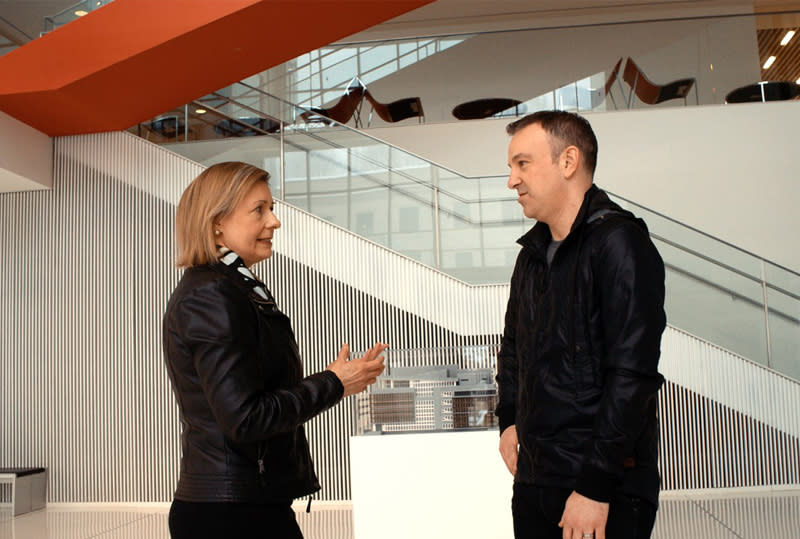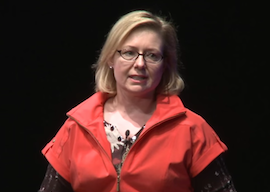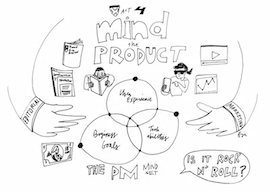
At Continuum, we have many smart and creative friends—and because our pals know such valuable things, we invite them to schlepp over to our offices and teach us. One time, David Rose, author of Enchanted Objects: Design, Human Desire, and the Internet of Things, joined Toby Bottorf, our VP of Service and Experience Design, to record this highly listenable podcast. Not long after, Rosalind Picard, founder of MIT’s Affective Computing Research Group, delivered a lively lunchtime lecture, to our employees, on the Empatica smartwatch.
Yes, it’s good to have friends—but it’s even better to work with them.
When Fisher-Price called us to help them envision the future of parenting, we knew it would make sense to augment our internal expertise with future-gazing pals such as, well, Rose and Picard. The partnership was extremely valuable, to us and Fisher-Price. And others. So much so that Kevin Young, SVP of Product Experience penned a Fast Company article on how any organization might employ a similar approach. He wrote:
You…need to look beyond in-house staffers to find experts in the fields most relevant to your initiative. For Fisher-Price, experts included technology innovators, child psychologists, and trend researchers. And you'll want to do more than interview these experts. You'll want to partner with them so they remain closely affiliated with your initiative, and continue to provide insights and credibility.
Y’see, for a long time, we’ve been thinking about collaboration, and we see the benefit of gleefully bringing more and more great outsiders into our orbit. We can recommend the practice. Highly.
Our experiment in networked intelligence didn’t end with Fisher-Price. In our project with Pacific Northwest National Library on the future of first response, we collaborated with authorities in the police, fire, and EMT worlds. With government. With industry. We also realized, while working with the Boston Public Schools on the High School Redesign project, that students themselves might benefit from our approach to networking, and so we invited students to network their own learning. And while we were at it, we did a little intellectual networking with Ted Dintersmith, of Mostly Likely to Succeed fame.
In our relentlessly connected age, it makes sense to realize that your capabilities can and should be augmented by those people with whom you’ve developed relationships. David Weinberger, whom I only know from reading his book Too Big to Fail: Rethinking Knowledge Now that the Facts Aren't the Facts, Experts are Everywhere, and the Smartest Person in the Room Is the Room, suggests that “in a networked world, knowledge lives not in books or in heads, but in the network itself.” (Note to self: make Weinberger part of your Personal Learning Network!)
I feel fortunate, as a social network guy, to be working for an organization that understands, at an essential level, the value of knowledge networks and has made this an essential part of the work we do. Partner with Continuum, and you partner with our many, many other great partners.
So what can you do to network your knowledge, your organization?
Meet the people in your neighborhood—and write about ‘em. The moment Continuum moved into our new offices in Boston’s Innovation District, I immediately headed out for beers and pretzels with our neighbor, Dan Kenary, CEO of Harpoon Brewery, and then jogged over to Boston Children’s Museum for a playful conversation with CEO and President Carole Charnow. I strongly recommend getting to know the people in your neighborhood and, if appropriate, asking them some questions and writing up the whole deal in a post for your company’s blog.
Meet, munch, and learn. Bring the smart people you come into contact with, those who really know something unusual, to talk to you and your colleagues, over lunch. When our buddy, HBR’s Eric Hellweg, staged a unique one-act one-man play, it was entertaining and educational for all involved. A lunch lecture series is a terrific excuse to reach out to great people, and to make your organization smarter.
Stop Slacking and swim into the public conversation. Get on Twitter and get chatting. Innovators should join #innochat (Twitter chats on Thursdays at 12 noon ET; Facebook group happening all the time!). The healthcare-minded should become members of the superlative #hcldr group (chats on Tuesdays at 8:30 p.m. ET). There are many more chat groups for you to join, but these two are exceptionally welcoming and intelligent.
Join Continuum’s social networks! We’re talking to plenty of people on our Twitter and Facebook pages. And you can always, or just about always, find me here. The more smart and creative people we know, and possibly work with, the better. Let’s talk!




